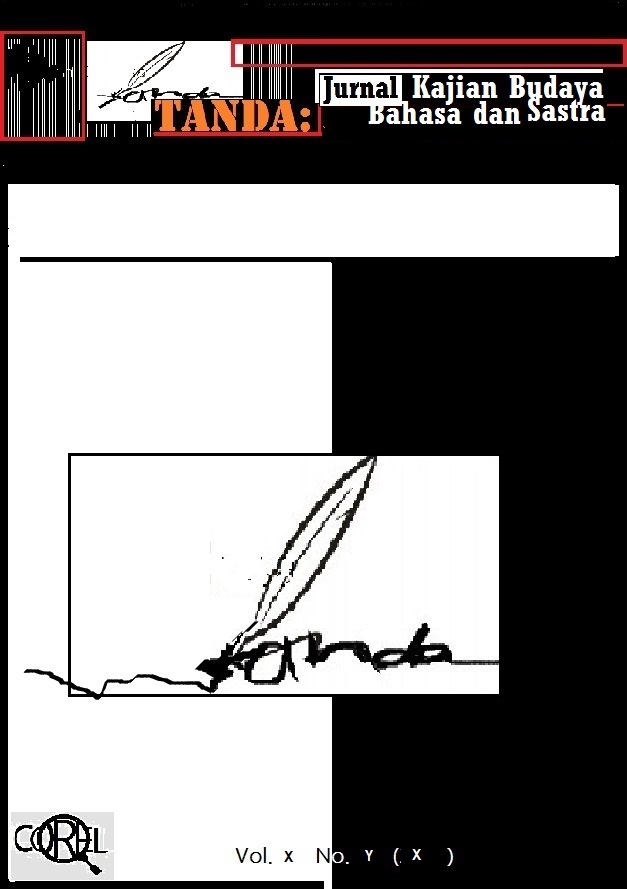TARI SEBLANG BANYUWANGI SEBAGAI RITUAL MISTIS WUJUD SYUKUR
DOI:
https://doi.org/10.69957/tanda.v3i05.1927Keywords:
Mystical ritual, Seblang dance, Osing tribeAbstract
Banyuwangi, located in the province of East Java, is known not only for its natural beauty, but also as a home to the Osing tribe who have a rich and mystical culture. One of the most famous traditions is the Seblang Dance ritual, which is carried out by the Osing people in two villages in Glagah District, Banyuwangi Regency. This ritual aims to maintain the cleanliness of the village and as a form of warding off disaster, so that the village remains peaceful and protected from disaster. The uniqueness of the Seblang Dance lies in the condition of the dancers who are often in a trance or possessed by spirits, which is considered part of the process of summoning ancestral spirits to provide blessings and protection for the village. In this ritual, in addition to dancing, various series of activities are also carried out such as pilgrimage to ancestral graves, slametan, ider bumi, and a parade around the village. Every step in this ritual has a deep spiritual meaning. The Seblang Dance is also regulated by special provisions, starting from the selection of dancers who must meet certain age requirements, the use of typical accessories, to the time of implementation which is usually carried out in the month of Hajj or a week after Eid al-Adha. All of these processions not only show the community's gratitude to God and ancestors, but also reflect their efforts to maintain harmony between the spiritual and worldly worlds.
References
Agatha, R., Amelia, R. N., & Shabrina, R. N. (2023). Perspektif ‘Mistis’ Dan Konstruksi Sosial Ritual. Jurnal Sosial Humaniora Dan Pendidikan, 2(2), 135.
Saputra, H. S. P. (2014). Wasiat Leluhur: Respons Orang Using terhadap Sakralitas dan Fungsi Sosial Ritual Seblang. Makara Hubs-Asia, 18(1), 53–65.
Setiawan, H., Sukamto, S., Eskasasnanda, I. D. P., Ruja, I. N., & Pramesthi, R. (2023). Konstruksi sosial makna Tari Gandrung Seblang bagi Desa Bakungan Kecamatan Glagah Kabupaten Banyuwangi. Jurnal Integrasi Dan Harmoni Inovatif Ilmu-Ilmu Sosial (JIHI3S), 3(3), 226. https://doi.org/10.17977/um063v3i3p225-233
Suharti, M. (2013). Tari Ritual dan Kekuatan Adikodrati. Panggung, 23(4). https://doi.org/10.26742/panggung.v23i4.154
Wahyuni, N. D. (2017). Nilai-Nilai Religius Yang Terkandung Dalam Tradisi Tari Seblang Di Desa Bakungan Banyuwangi Jawa Timur. Sustainability (Switzerland), 11(1), 1–14. http://scioteca.caf.com/bitstream/handle/123456789/1091/RED2017-Eng-8ene.pdf?sequence=12&isAllowed=y%0Ahttp://dx.doi.org/10.1016/j.regsciurbeco.2008.06.005%0Ahttps://www.researchgate.net/publication/305320484_SISTEM_PEMBETUNGAN_TERPUSAT_STRATEGI_MELESTARI
Yashi, A. P. (2018). Ritual Seblang Masyarakat Using Di Kecamatan Glagah, Kabupaten Banyuwangi Jawa, Timur. Haluan Sastra Budaya, 2(1), 2. https://doi.org/10.20961/hsb.v2i1.11790
Downloads
Published
How to Cite
Issue
Section
License
Copyright (c) 2023 Qhaida Aulya Nur Syahfitri

This work is licensed under a Creative Commons Attribution-ShareAlike 4.0 International License.
Authors publishing in TANDA: Jurnal Kajian Budaya, Bahasa dan Sastra e-ISSN 2797-0477 will be asked to sign a Copyright Determination Form. In signing the form, it is assumed that the author has obtained permission to use copyrighted or previously published material. All authors must read and agree to the terms outlined in the form, and must sign the form or agree that the corresponding author can sign on their behalf. The article cannot be published until the signed form has been received. It is a condition of publication that authors grant copyright or license the publication rights in their article, including the abstract, to jurnaltanda@gmail.com. This allows us to ensure full copyright protection and to disseminate the article, and of course the Journal to the widest possible readership in both print and electronic formats.













